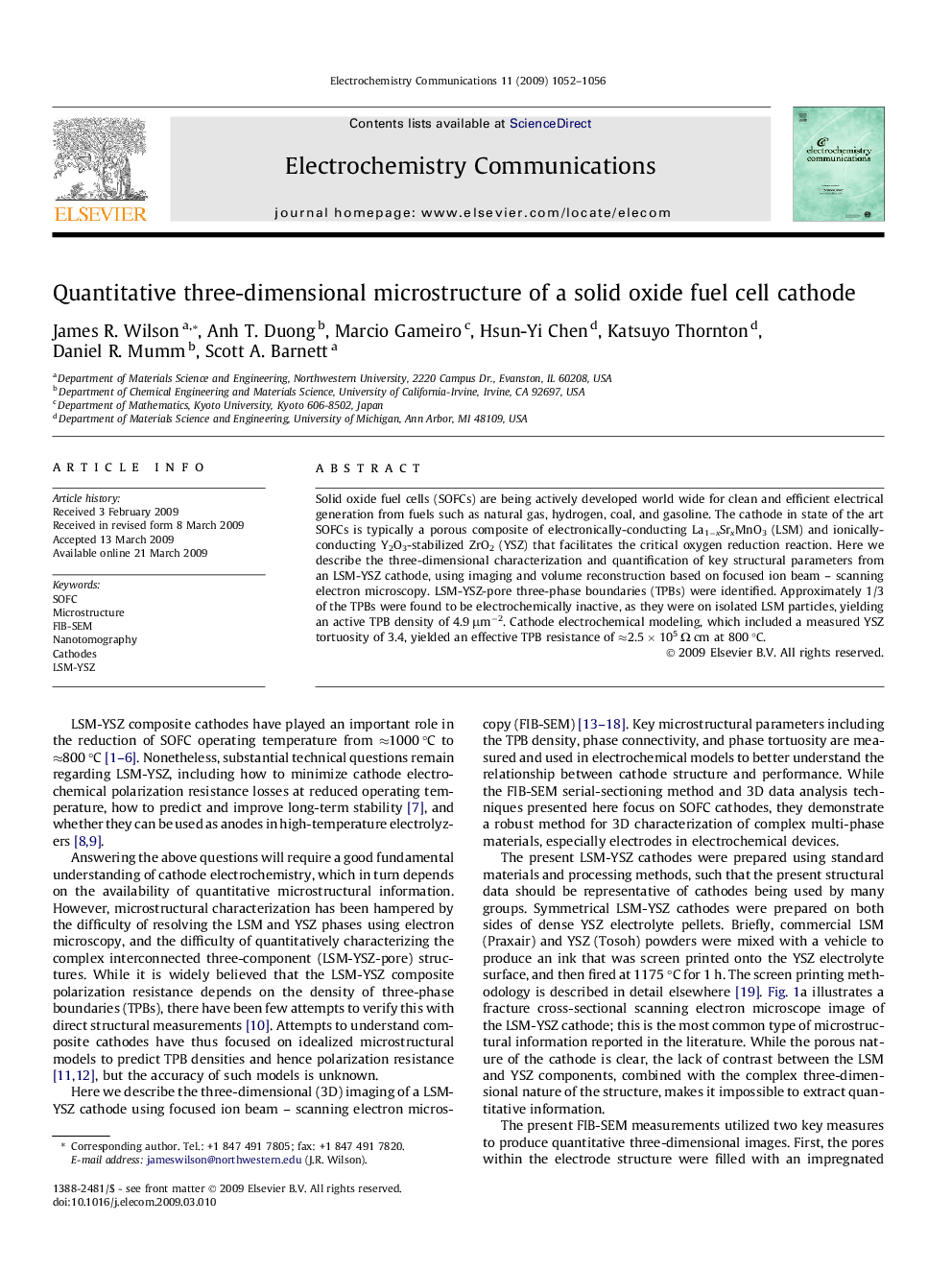| Article ID | Journal | Published Year | Pages | File Type |
|---|---|---|---|---|
| 180689 | Electrochemistry Communications | 2009 | 5 Pages |
Solid oxide fuel cells (SOFCs) are being actively developed world wide for clean and efficient electrical generation from fuels such as natural gas, hydrogen, coal, and gasoline. The cathode in state of the art SOFCs is typically a porous composite of electronically-conducting La1−xSrxMnO3 (LSM) and ionically-conducting Y2O3-stabilized ZrO2 (YSZ) that facilitates the critical oxygen reduction reaction. Here we describe the three-dimensional characterization and quantification of key structural parameters from an LSM-YSZ cathode, using imaging and volume reconstruction based on focused ion beam – scanning electron microscopy. LSM-YSZ-pore three-phase boundaries (TPBs) were identified. Approximately 1/3 of the TPBs were found to be electrochemically inactive, as they were on isolated LSM particles, yielding an active TPB density of 4.9 μm−2. Cathode electrochemical modeling, which included a measured YSZ tortuosity of 3.4, yielded an effective TPB resistance of ≈2.5 × 105 Ω cm at 800 °C.
